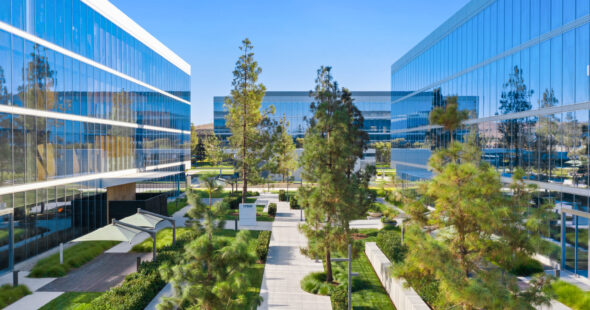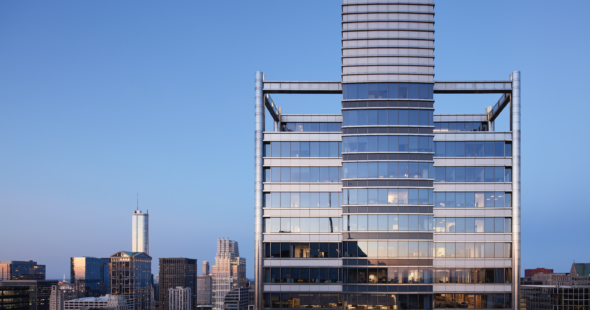
“Sustainability” is a word now pinballing around every office space. It’s slippery, electrically charged, a little hard to pin down. What does “implementing sustainability initiatives” look like? How can we become more “sustainable?” Who shoulders this responsibility — employees, the employer, the building where their offices are held or some combination?
Historically, it has been challenging for businesses to rationalize a commitment to sustainability initiatives, which often came at a premium, and no clear sense of its benefits. Today, innovation is driving down the cost of its adoption and the importance of sustainability becoming ubiquitous in both everyday life and corporate culture. At the same time, there is an urgent call to action around the conversation, and a strong communal response: with the invention of more green products and being environmentally on the mind, businesses can be cost-effective and earth-friendly all at once.
Mindfulness and Intentional Efforts
For businesses, sustainability is manifesting itself in daily worklife. Small changes in the workplace such as going paperless, making recycling part of normal operations and using “green-certified” office products are making a big difference. Beyond introducing an intentionality to the workplace and a global, environmental awareness, these initiatives are also actually helping companies save money.
For employees, there’s potential to make a difference through small decisions in your day. Taking public transit or biking to work reduces your carbon footprint. Using a reusable water bottle is another small change with big impact. And when workers start “thinking green,” they find endless ways to protect the earth and enjoy the peace of mind that results.
Green Space and State of Mind
Studies show that green spaces in working environments — including indoor gardens, access to courtyards and nearby parks — help boost mood and productivity. In green-certified offices, employees experience a 26% boost in cognition and 30% fewer sickness-related absences.
Green spaces can even live in tiny ceramic pots — more studies show that employees’ productivity and creativity both increase 15% when introducing only a handful of houseplants to the workplace. Not only that, but having plants around can help reduce carbon dioxide levels by about 10% in air-conditioned offices, and by about 25% in buildings without air conditioning.
During Earth Week (April 22-26), Irvine aimed to continue the conversation about sustainability in the workplace, including scheduled programming that celebrates going green. In addition, we shared environmentally-friendly tips implementable by both offices and employees. We will continue to utilize our resources beyond Earth Week to keep the building highly sustainable and eco-friendly.





